The Secret To Looking Younger: Chose Makeup, Clothing and Jewelry Colors Based On Your Skin Undertone
Have you ever wondered why your foundation still doesn't seem like your perfect match, despite the major efforts of blending it out? Or how your best friend's skin glows against her red mane, but when you tried the color it washed out your complexion? Maybe you bought a green dress, but whenever you wear it your skin looks green too. It can be frustrating when you think you're using the right shade of anything, but something just seems off. The culprit? You may not be matching these colors to your skin undertone.
Your skin undertone plays an important role in determining your makeup, clothing and even your jewelry choice. In fact, matching your skin undertone with the colors you choose to put up against your skin can make the difference between your complexion looking, drab or glowing, sallow or radiant or green or golden, says professional makeup artist Andrea Claire.
Keep scrolling to discover your skin undertone — and the ways in which know it can help you make the most flattering color choices for you!
What is a skin undertone?
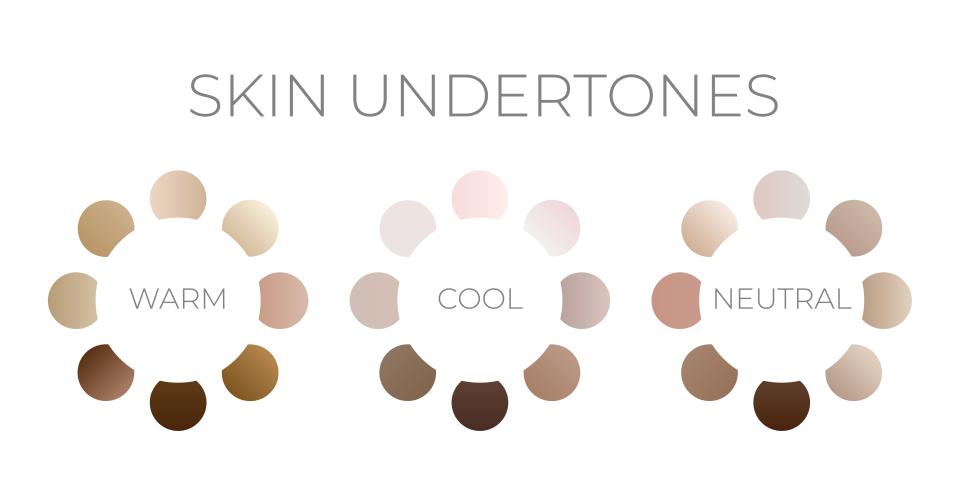
Undertones are not to be confused with skin tones, which are basically your skin color (fair, medium, dark) and can slightly change throughout the year, especially when you're spending more time in the sun during the warmer months or if adding a faux sun-kissed glow with self-tanner. In contrast, your skin's undertone is the tone beneath the skin's surface which stays the same no matter the time of year. Another key difference is that you can’t always tell your skin’s undertone with just a quick glance, the way you can with your skin color and tone.
There are three different undertones: warm, cool and neutral. Although you might see other types of undertones thrown around like olive undertones, golden undertones, yellow undertones or pink undertones, those categories fall within the three larger categories above.
Warm undertones tend to be more orange or yellow.
Cool undertones tend to have a blue or greenish shade.
Neutral undertones usually have neither an orange-ish or a blue-ish shade.
Essentially, when you pick out a makeup color, or even clothing or jewelry, you’ll want to use the tone of the product or item to complement the natural undertone below the surface of your skin. This will balance your natural skin tone and undertone, making it easier to get a makeup match that looks flawless, hair color that blends well with skin and to wear clothes that let your natural beauty shine.
How to determine your skin undertone
Here, some strategies that will help you find out your undertone:
1. Look at your veins
One of the simplest ways to determine your undertone is to look at your veins. It’s best to look at an area on your body where the skin is thinner, like the underside of your wrist, and always ensure that you’re using natural light to get an accurate reading.
If your veins are bluish or purplish: You have a cool undertone.
If your veins appear more green: You have a warm undertone.
If veins are hard to see or are a mix of green and bluish purple: You have a neutral undertone.
Watch this video to help determine your vein color:
2. Consider your hair and eye color
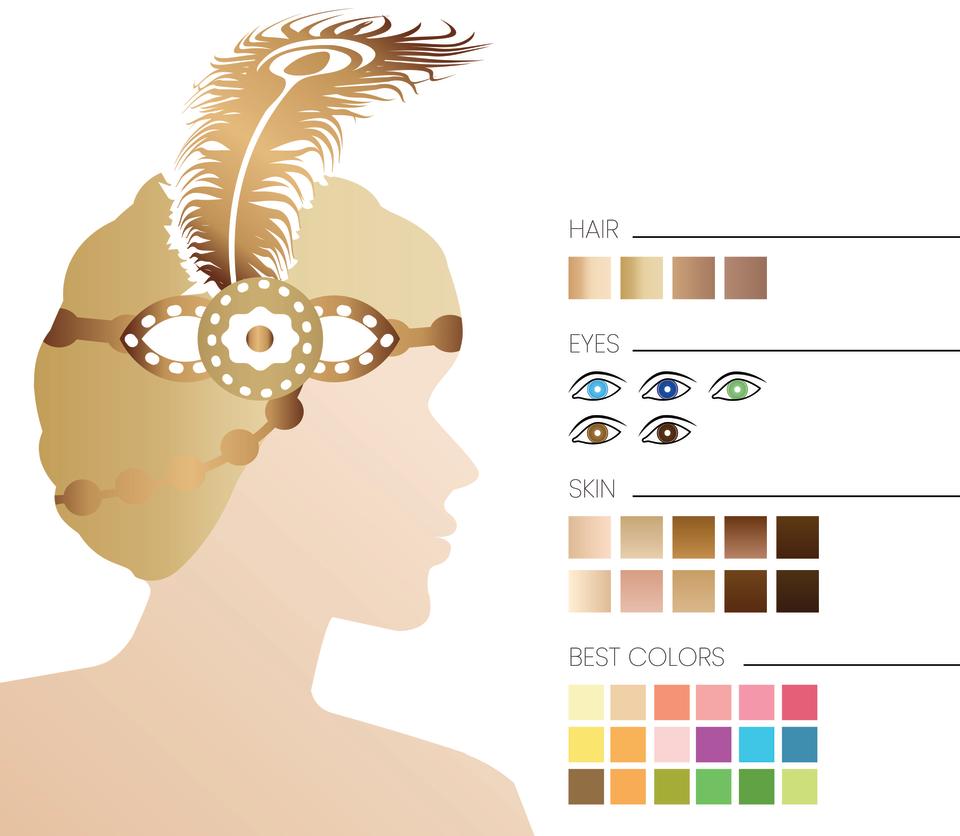
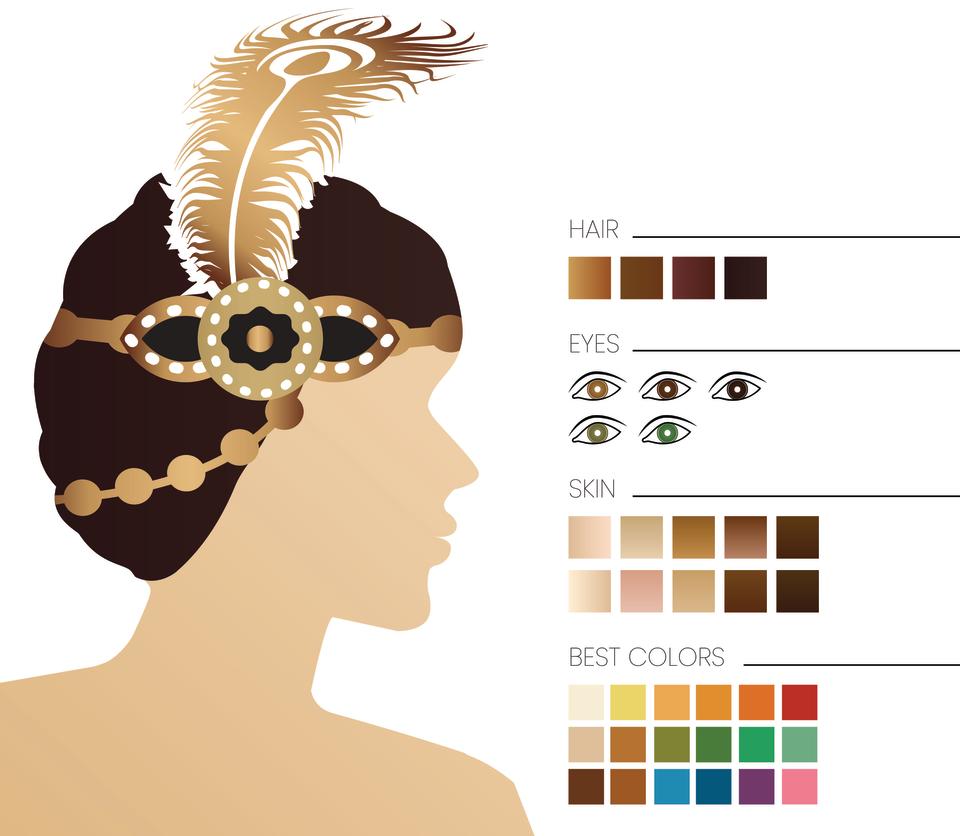
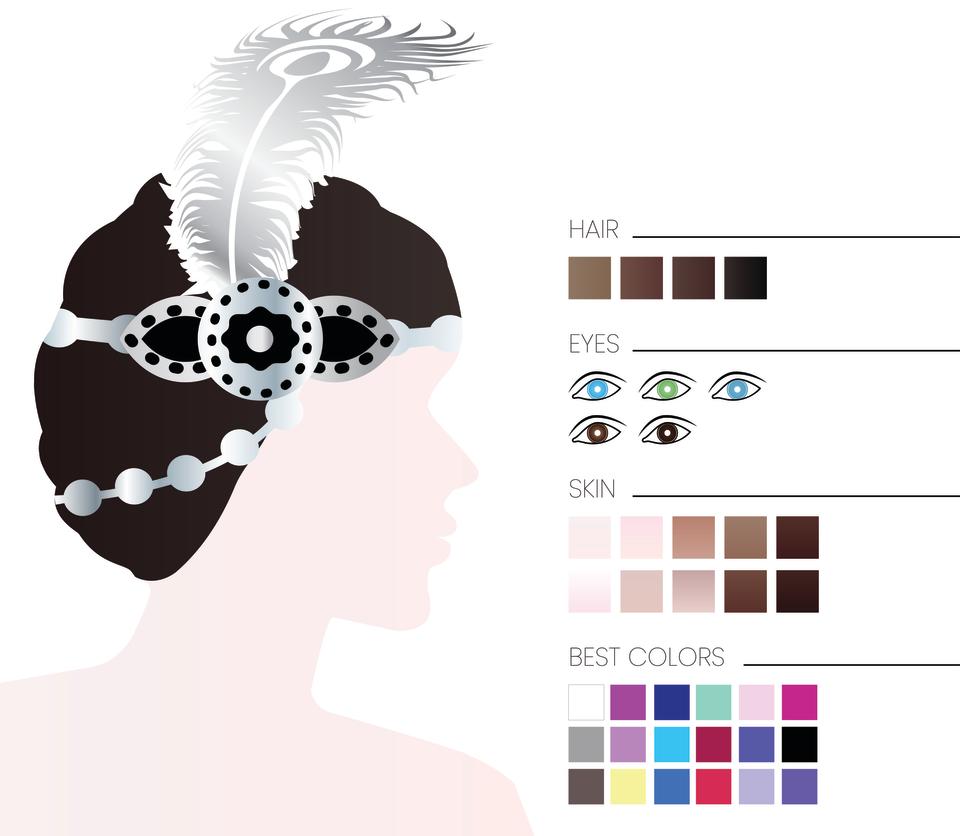
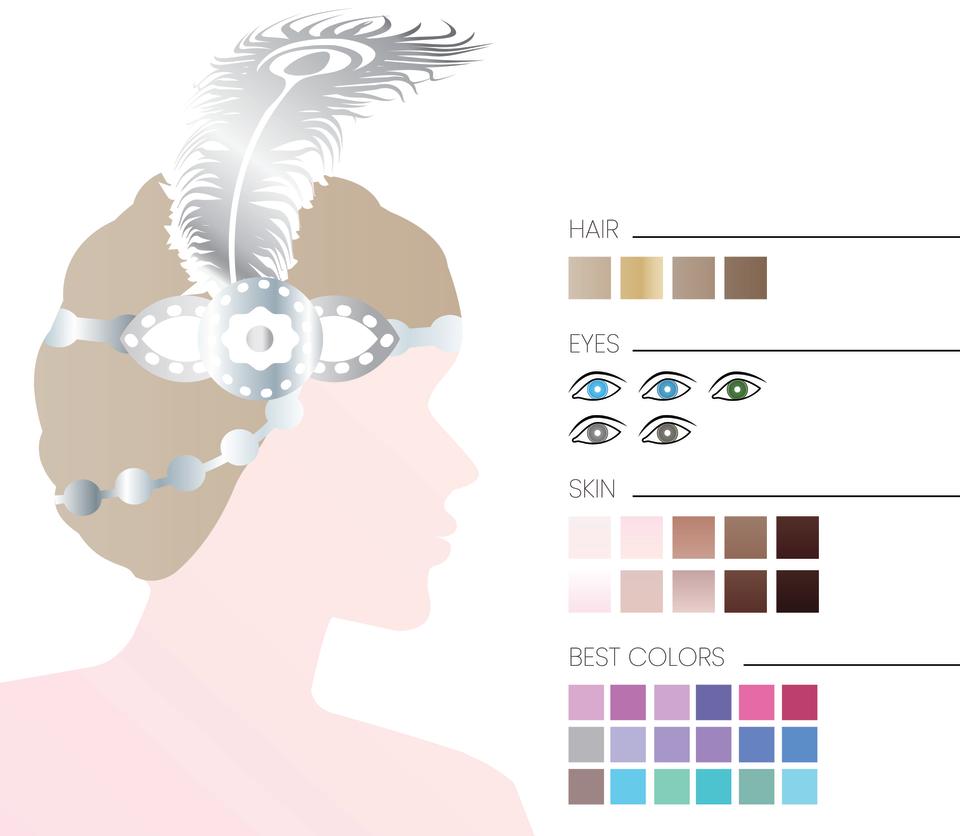
Looking at the natural color of your hair and eyes can also help reveal your undertone.
Those with lighter eye colors, like blue or gray, and lighter skin and hair colors tend to have cool undertones.
Those with deeper eye colors, like brown or green, and deep skin and hair colors typically have warm undertones.
Those with very fair or porcelain skin can often be neutral or cool, and light skin is typically neutral.
A few skin tones in the middle can easily align with any of the three undertones, including medium and olive. It’s more common for darker skin to have a cool undertone than for light skin to have a warm undertone, but it’s still most likely that those with deeper coloring will have warm undertones.
*These* colors work best with your skin undertone
Now that the hard part is out of the way and you know what your undertone is, let’s take a look at what colors flatter your undertone best. Generally speaking, it’s best to use the color spectrum as your guide, regardless of what undertone you have and pick colors that will harmonize with your undertone. But this guide can help:
When it comes to makeup:
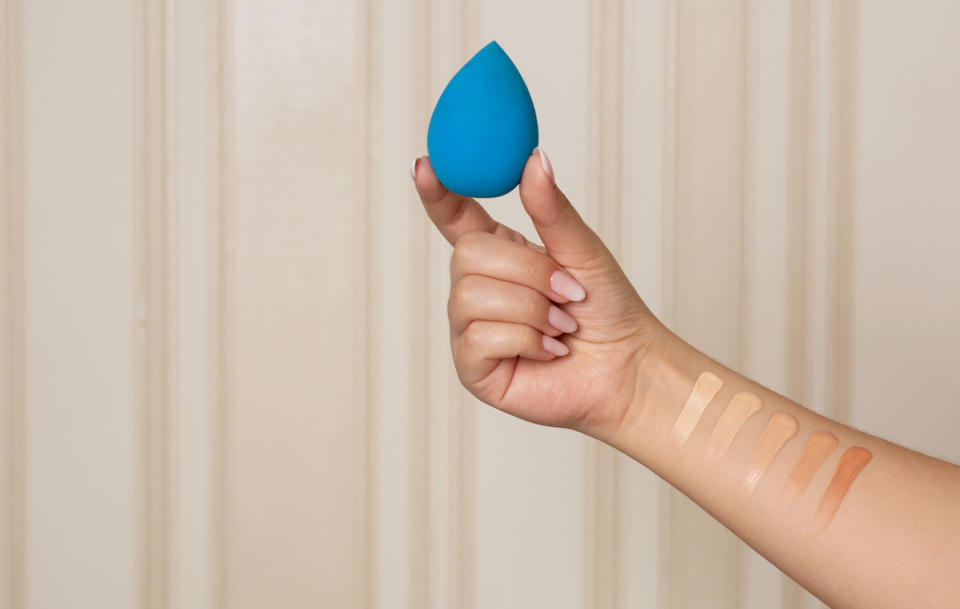
Knowing your undertone can be useful for shade-matching new foundation, but it doesn’t hurt to consider the products you already wear. Andrea Claire says if you’re wearing the right foundation, it will look smooth and seamless, but if your foundation leaves a noticeable harsh line or doesn't exactly match the rest of your skin, then you likely haven't matched it to your skin undertone. Here's her advice for getting your perfect shade.
Have cool undertones? You'll want to look for foundations listed as cool or with "C" in the shade name. If you're wearing a warm foundation, it may look yellow or green.
Have warm undertones? You'll want to look for foundations listed as warm or with "W" in the shade name. If you're matched with a cool foundation, it will look pale and washed out.
Have neutral undertones? Your best bet is to get a foundation listed as neutral or with "N" in the shade name. But, lucky for you, warm and cool foundations can work with your complexion.
Don't want to run out and buy a new foundation? Andrea Claire suggests adjusting your current shade with a little bit of color magic. Just grab a mix-in pigment in white (it will lighten a too dark foundation), blue (it will make a warm-toned foundation cooler) or yellow (it will make a cool-toned foundation warmer) like L.A. Girl Pro Matte Mixing Pigment (Buy from Ulta, $7 each) and combine 1 to 2 small drops with your foundation before applying.
(Click through to discover more tips on how to find your best makeup shades based on your skin tone).
When it comes to hair color:
While rocking your natural hue will always flatter your skin undertone, if you want to test out a new hair color or are wondering what other hair color would suit you best, read on:
Have cool undertones? Celebrity hair colorist Rick Wellman who has worked with Drew Barrymore and Tina Fey, says you'll look great with silver, platinum, mahogany and black-brown strands as they all fall in the cool family and harmonize with a cool undertone. And unlike with makeup, warmer hair colors, like copper, caramel brown and rich espresso, also work well with cooler undertones. This creates beautiful contrast between skin and hair that draws attention to gorgeous facial features.
Have warm undertones? It's best to stick with warmer hair shades like honey blonde, rich auburn, chestnut brown and salt and pepper to enhance the warmth in skin, says Wellman. There are a few outliers though as some cooler-toned darker hair hues such as mahogany and black-brown pop against skin for added radiance.
Have neutral undertones? Your undertone makes your hair a true blank canvas as shades that fall in the cool and warm categories will make you and your features stand out.
(Click through for some hair color ideas that will flatter your undertone and help turn back the clock).
When it comes to clothes:
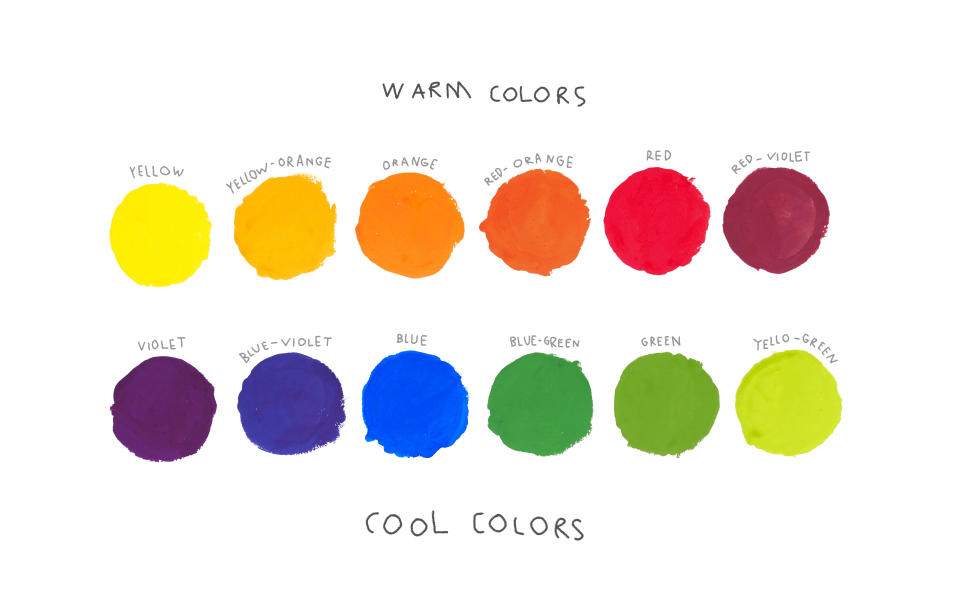
When picking out our favorite clothing, we actually go a lot on instinct — and that can work in our favor when it comes to what best complements our skin undertone.
Have cool undertones? You'll look best in colors that fall on the cool end of the color spectrum. "Cooler toned people look best in blues, pinks, purple, grey and jewel tones," says celebrity stylist Samantha Brown. These colors create a contrast against cool skin, as those with cool undertones typically have more pale skin. This contrast will ensure your skin does not look washed out.
Have warm undertones? You'll look best in off-colors and more muted shades. "Warm toned people look great in earthier colors like orange, olive, mustard, cream, coral and red," says Brown. Notice that these colors all fall on the warm end of the color spectrum.
Have neutral undertones? You have the best of both worlds, as you'll look great in most colors. You can change up your look however you want without worrying about wearing an unflattering color. Since those with neutral undertones don’t fall into one end versus the other, there isn't a huge contrast between colors and your skin.
Colors of items in your closet don't match up with your undertone? No need to toss them out, says Brown. All it takes is using a little bit of color theory, which uses the color wheel to see how colors mix, match and contrast against each other, to help balance it out for a flattering look.
For example: "When wearing a tricky color like mustard, for instance, you can balance its warmth with a turquoise necklace," says Brown. "Equally saturated hues pair well together, so don’t shy away from a color you love even if it’s 'off limits' in your undertone reading."
This video can help you learn more about color wheel theory and how to us it with clothing:
When it comes to jewelry:
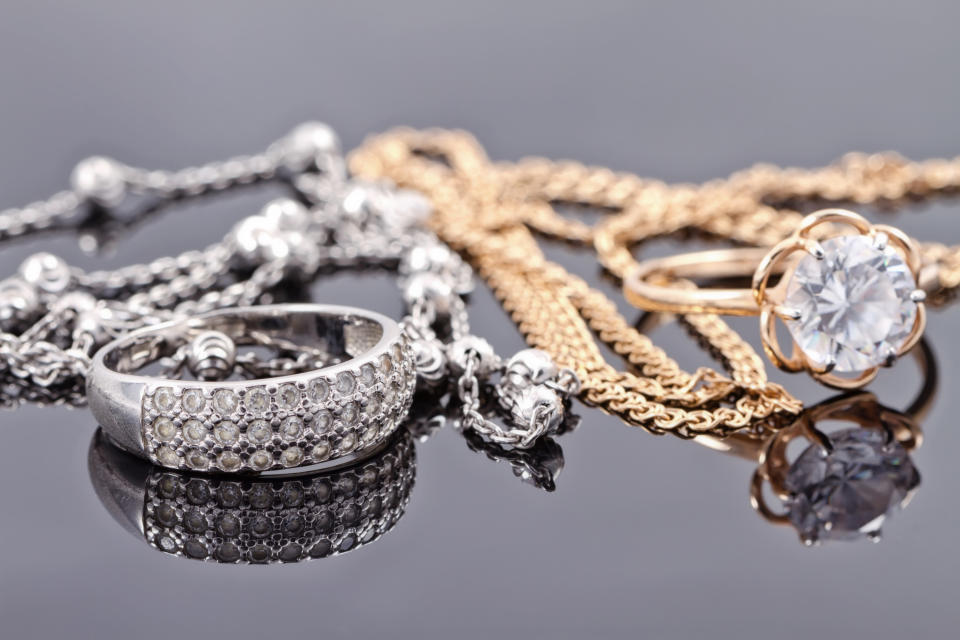
From silver to gold to rose gold, of course, we all have our preferences, so this isn’t a hard and fast rule, but matching a metal to your undertone can be the most flattering.
Have cool undertones? You'll sparkle in silver jewelry. Silver is a nice contrast against lighter skin, and the metal enhances the underlying blue and pink tones in cooler skin.
Have warm undertones? You'll look best in gold and rose gold jewelry. Gold is a warm shade on the color spectrum, with hues of yellow and orange that beautifully complement warmer undertones.
Have neutral undertones? You can wear and will look flattering in any color of metal, so mix and match to your hart's desire.
To learn more about how the right colors can affect you, click through these stories:
Does Blue Calm You? Yellow Spark Joy? Here’s How Much (and Why) Your Home Color Affects Your Mood
6 Easy Ways to Improve Your Health By Adding More Color to Your Life
